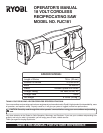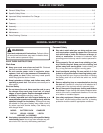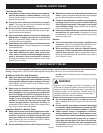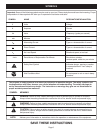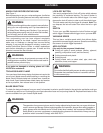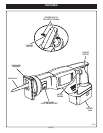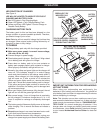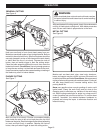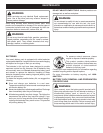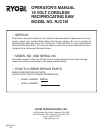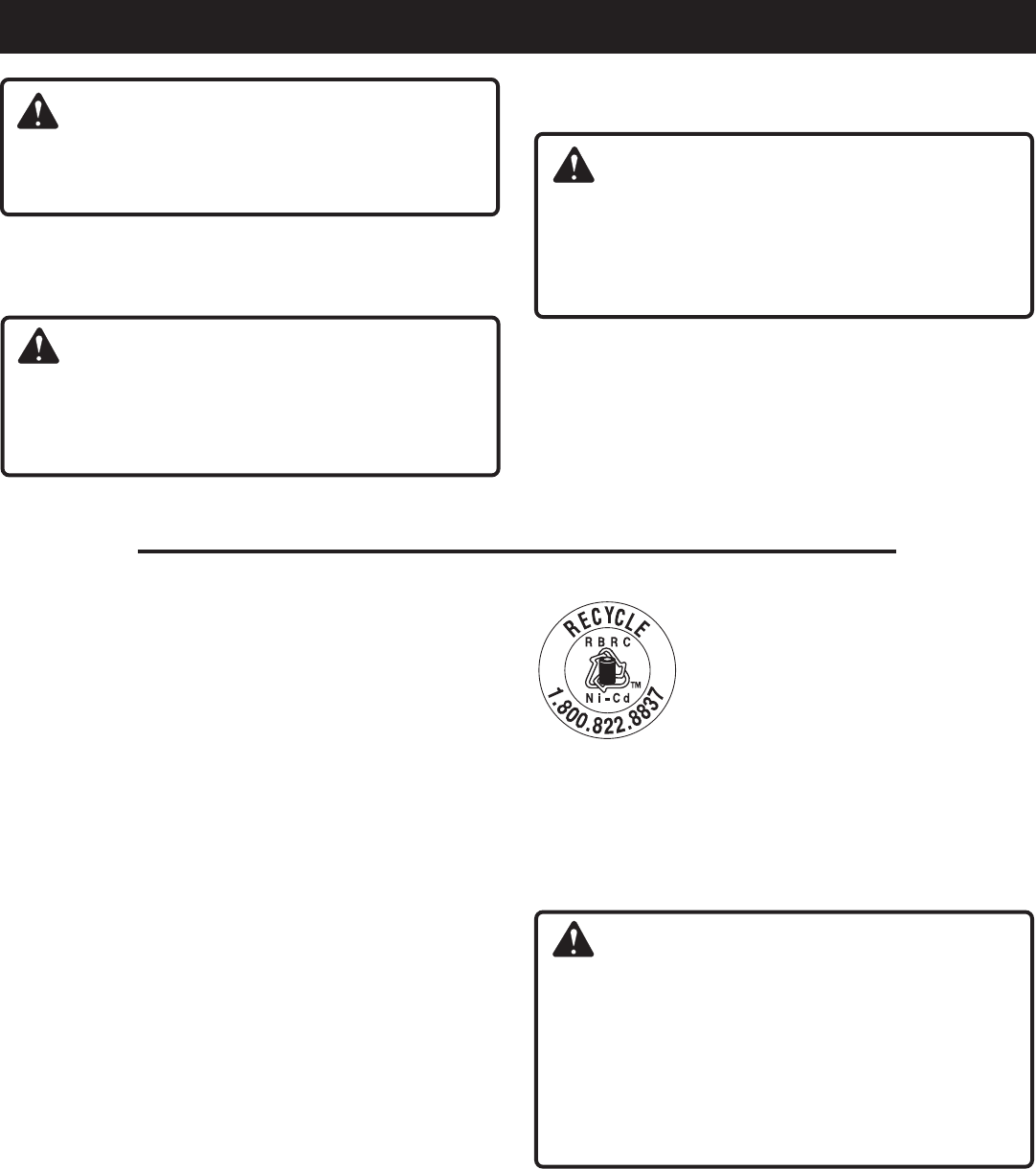
Page 11
BATTERIES
Your saw's battery pack is equipped with nickel-cadmium
rechargeable batteries. Length of service from each charging
will depend on the type of work you are doing.
The batteries in this tool have been designed to provide
maximum trouble free life. However, like all batteries, they
will eventually wear out. Do not disassemble battery pack
and attempt to replace the batteries. Handling of these
batteries, especially when wearing rings and jewelry, could
result in a serious burn.
To obtain the longest possible battery life, we suggest the
following:
■ Store and charge your batteries in a cool area.
Temperatures above or below normal room temperature
will shorten battery life.
■ Never store batteries in a discharged condition. Recharge
them immediately after they are discharged.
■ All batteries gradually lose their charge. The higher the
temperature the quicker they lose their charge. If you
store your tool for long periods of time without using it,
recharge the batteries every month or two. This practice
will prolong battery life.
To preserve natural resources, please
recycle or dispose of batteries properly.
This product contains nickel-cadmium
batteries. Local, state or federal laws may
prohibit disposal of nickel-cadmium
batteries in ordinary trash.
Consult your local waste authority for information regarding
available recycling and/or disposal options.
For more information on battery recycling, call 1-800-
8BATTERY.
BATTERY PACK REMOVAL AND PREPARATION
FOR RECYCLING
WARNING:
Upon removal, cover the battery pack's terminals with
heavy duty adhesive tape. Do not attempt to destroy or
disassemble battery pack or remove any of its
components. Nickel-cadmium batteries must be recycled
or disposed of properly. Also, never touch both terminals
with metal objects and/or body parts as short circuit may
result. Keep away from children. Failure to comply with
these warnings could result in fire and/or serious injury.
WARNING:
When servicing use only identical Ryobi replacement
parts. Use of any other parts may create a hazard or
cause product damage.
Avoid using solvents when cleaning plastic parts. Most
plastics are susceptible to damage from various types of
commercial solvents and may be damaged by their use.
Use clean cloths to remove dirt, carbon dust, etc.
WARNING:
Do not at any time let brake fluids, gasoline, petroleum-
based products, penetrating oils, etc. come in contact
with plastic parts. They contain chemicals that may
damage, weaken, or destroy plastic.
MAINTENANCE
DO NOT ABUSE POWER TOOLS. Abusive practices can
damage tool as well as workpiece.
WARNING:
Do not attempt to modify this tool or create accessories
not recommended for use with this tool. Any such
alteration or modification is misuse and could result in a
hazardous condition leading to possible serious personal
injury.



